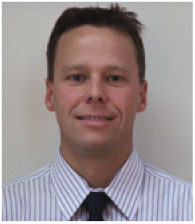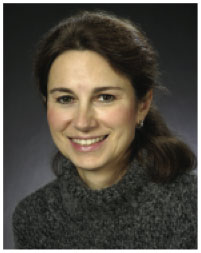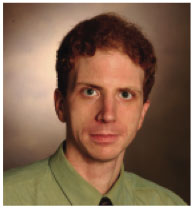The Anesthesia Patient Safety Foundation (APSF) is pleased to report that it continues to attract outstanding applications for funding. The educational focus of the APSF includes innovative methods of education and training to improve patient safety, development of educational content with application to patient safety, and development of testing of educational content to measure and improve safe delivery of perioperative anesthetic care.
The application process continues with an electronic, online submission format that was introduced in 2005. The applications, as well as all the required attachments, are uploaded to the new APSF redesigned website (www.APSF.org), a process that facilitates the application review by members of the Scientific Evaluation Committee, improves the timeliness of response, and facilitates transmission of reviewer feedback to the applicants. The Scientific Evaluation Committee members continue to modify and perfect the electronic application and review process.
This year, the Scientific Evaluation Committee is very pleased to report on several significant developments in the APSF Grant Program. The first is an increase in funding from $75,000 to $150,000 per accepted application, an amount that now includes up to 15% for institutional overhead. The second development is the inauguration of the Cardinal Health Foundation Research Award, made possible by the generous unrestricted donation ($150,000) by the Cardinal Health Foundation that will support investigations in the areas of education and training or clinical research in medication safety. The third is the continuation of the APSF/Anesthesia Healthcare Partners Award, started in 2006 and made possible by a partial ($100,000) unrestricted grant. In addition to the Clinical Research and Education and Training content that is the major focus of the funding program, the APSF continues to recognize the patriarch of what has become a patient safety culture in the United States and internationally, and one of the founding members of the foundation—Ellison C. “Jeep” Pierce Jr., MD. The APSF Scientific Evaluation Committee continues to designate each year one of the funded proposals as the recipient of this prestigious nomination, the Ellison C. Pierce, Jr., MD, Research Award. The award carries with it an additional, unrestricted prize of $5,000.
For the year 2006 (projects to be funded starting January 1, 2007), 5 grants were selected for funding by the APSF Scientific Evaluation Committee (for names of committee members, please refer to the list in this issue). The APSF Scientific Evaluation Committee members were pleased to note that they reviewed 32 applications in the first round, 12 of which were selected for final review at the American Society of Anesthesiologists’ (ASA) annual meeting in Chicago, IL. As in previous years, the grant submissions addressed areas of high priority in clinical anesthesia. The major objective of the APSF is to stimulate the performance of studies that lead to prevention of mortality and morbidity from anesthesia mishaps. A particular priority continues to be given to studies that address anesthetic problems in healthy patients, and to those studies that are broadly applicable and promise improved methods of patient safety with a defined and direct path to implementation into clinical care. Additionally, the APSF is encouraging the study of innovative methods of education and training to improve patient safety, and methods for the detection and prevention of medication errors.
The APSF Scientific Evaluation Committee met during the ASA annual meeting on October 14, 2006, in Chicago for final evaluation of the proposals. Of the 12 finalists, the members of the APSF Scientific Evaluation Committee selected 5 awardees:

Greg Stratmann, MD, PhD—Assistant Professor in Residence, Department of Anesthesia and Perioperative Care, University of California at San Francisco.
Dr. Stratmann’s submission is entitled “Effectiveness of three clinically applicable strategies to improve the safety of neonatal anesthesia.”
Background: Neonatal anesthesia causes neurodegeneration in many animal species, including monkeys. The investigator’s preliminary data suggest that neonatal rats are unable to compensate for this neuronal loss by increasing the formation of new neurons (neurogenesis) from neural stem cells. In fact, the authors previously found that isoflurane is toxic to neuronal stem cells in culture, and in neonatal rats in vivo. Decreased neurogenesis by itself causes cognitive decline and a permanent cognitive deficit in rats at 5 and 8 months after neonatal anesthesia. The purpose of this study is to prevent the cognitive decline following anesthesia in neonates. The authors will test the clinical effectiveness of 3 easily applicable strategies to reduce anesthetic toxicity in neonatal rats. Dr. Stratmann will first establish a hierarchy of toxicity of the most clinically relevant anesthetic agents; second, the investigators will determine the safe duration of 1-MAC isoflurane exposure; and third, they will test whether erythropoietin, administered before general anesthesia, can prevent the neurodegeneration and the decrease in neurogenesis, while normalizing long-term (4 months) cognitive outcome. Dr. Stratmann and his colleagues will use a combined approach, including assessment of anesthetic toxicity of different agents and durations of exposure in neonatal neural stem cell lines in vitro, and neonatal rats in vivo. They further propose to quantify apoptosis, neural progenitor proliferation, progenitor cell survival, neuronal differentiation (neurogenesis), and cognitive outcomes by employing sophisticated immunocytochemical techniques and 2 sensitive neurocognitive testing modalities.
Implications: Collectively, this novel and comprehensive approach (that includes both cellular and molecular biology as well as long-term cognitive outcome assessment) will allow the identification of strategies with high clinical applicability that will improve the safety of neonatal and pediatric anesthesia.
In addition to receiving the requested funding of $150,000 for this project, Dr. Stratmann is also the recipient of the Ellison C. Pierce, Jr., MD, Research Award, which consists of an additional, unrestricted grant of $5,000.

Karen J. Roetman, MD—Attending Anesthesiologist, Department of Anesthesiology, Virginia Mason Clinic, Seattle, WA. Dr. Roetman’s research proposal is entitled “Safety of postoperative opioid analgesia in patients with Obstructive Sleep Apnea: What are the risks and how can the risks be safely managed?”
Background. Obstructive Sleep Apnea (OSA) is an increasingly common medical problem encountered by anesthesia providers, and the relationship between obesity and OSA suggests that the frequency with which we encounter patients with OSA is likely to continue to increase for the foreseeable future. Of particular concern to clinicians caring for OSA patients is the issue of how to safely provide adequate postoperative analgesia. The underlying question is whether the combined effects of sedative hypnotics, volatile anesthetics, and opioid analgesics will increase the risk of obstructive episodes, and decrease the likelihood of arousal in order to clear the airway when obstruction does occur.
Purpose. This grant proposes to conduct the first prospective, blinded, randomized, controlled investigation of ventilatory problems experienced by patients with OSA who receive opioid analgesics in the postoperative period. In addition, the study will identify risk factors for perioperative ventilatory problems in patients with OSA, and will investigate the validity of the recent ASA guidelines for the perioperative care of patients with OSA. The study will use an ambulatory polysomnography system to continuously record arterial saturation, respiratory effort, nasal/oral airflow, EEG, and EKG throughout the postoperative period in patients with OSA, and in matched controls.
Significance. Current estimates are that the incidence of OSA in western populations is 5-9% and that the number of surgeries performed in the USA is approximately 40 million per year (data from ASA library staff); thus, as many as 3.6 million patients with OSA present for surgery each year. Added to this number are the patients who undergo “procedural sedation” each year and those who will “screen positive” for potential OSA using the ASA’s screening guidelines, even though they do not have the disease. Thus, the data derived from this study are likely to be applicable to at least 5 million patients each year in the United States.
In addition to receiving the requested funding of $150,000 for his project, Dr. Roetman’s application was designated as the Cardinal Health Foundation Research Award, made possible by an unrestricted, $150,000 grant from the Cardinal Health Foundation.

Kirk Hogan, MD, JD—Professor, Department of Anesthesiology, University of Wisconsin, Madison, WI. Dr. Hogan’s research proposal is entitled “Anesthetic and surgical risk factors for Alzheimer’s Disease in adult children of persons with Alzheimer’s Disease.”
Background. Since 2001, the Wisconsin Registry for Alzheimer’s Prevention (WRAP) has enrolled adult children of persons with Alzheimer’s Disease (AD) for serial clinical, neuropsychological, biochemical, and neuro-imaging evaluations in order to correlate variation in the onset and progression of AD in a high-risk population sample with biomarkers of AD. Shortly after the inception of WRAP, the potential for deleterious consequences of surgery and anesthesia in months to years after an operative procedure became a new focus of research, arising in large part from the original and sustained efforts of the APSF. The purpose of the present proposal is to test whether anesthetic and surgical risk factors associated with postoperative cognitive impairment contribute to AD in participants at heightened susceptibility by virtue of family history (i.e., one or both parents with proven AD), and genetic predisposition. A key feature of WRAP is that upon registration, all participants provide consent for re-contact antecedent to entry into new trials. Taking advantage of this study design, current and future WRAP participants will be approached for consent to enter their anesthetic and surgical records into the WRAP database (850 persons in the positive family history [FH+] group, and 350 persons in the negative family history [FH-] control group). This information will be scored for variables known or suspected to be associated with cognitive dysfunction in the postoperative interval.
Significance. If successful, this investigation will identify genetic, acquired, and environmental predictors in perioperative care that predispose a substantial proportion of otherwise healthy patients at risk for AD to adverse and potentially avoidable neurologic outcomes. No other study has evaluated anesthetic and surgical risk factors for dementia in a population enriched for participants with a positive family history.
In addition to receiving the requested funding of $150,000 for his project, Dr. Hogan is the recipient of the APSF/Anesthesia Healthcare Partners Research Award, made possible by an unrestricted educational grant in the amount of $100,000.

Jason M. Slagle, PhD—Assistant Professor of Anesthesiology, Vanderbilt University Medical Center, Nashville, TN. Dr. Slagle’s research proposal is entitled “The impact of performance-shaping factors on anesthesia care task distribution, vigilance, workload, and non-routine events.”
The purpose of this project is to 1) elucidate the incidence, type, and etiology of various performance-shaping factors including those that may be potentially disruptive or informative; and 2) delineate the effects of these factors on anesthesia providers’ task performance, vigilance, and workload, and on the occurrence of non-routine events (NRE). A NRE is any event that deviates from optimal care for a specific patient in a specific clinical situation. Video will be captured and behavioral task analysis (i.e., time-motion analysis), as well as workload and vigilance assessments, will be conducted for each observed case. At the end of the case, the anesthesia provider will be queried using an established instrument as to whether any NRE occurred during the case. During real-time observation and off-line video-analysis, the authors will identify and classify intraoperative events and tasks including their timing, type, and source of initiation and termination (self or external). Multivariate models will be used to assess the effect of different types of environmental influences and provider-initiated activities on clinical task distribution, workload, vigilance, and NRE occurrence.
Significance. The proposed work will provide a detailed description of the nature and impact of the effects of these performance-shaping factors, thus allowing future practices and policies to be guided by objective evidence rather than opinion. The findings will also contribute to future redesign of the OR environment, anesthesia equipment, information technology, and curricula.
The requested funding in the amount of $149,965 is made possible by a grant from the APSF.

Jenny W. Rudolph, PhD—Assistant Professor, Health Services Department, Boston University School of Public Health, Boston, MA. Dr Rudolph’s research proposal is entitled “Does a standardized electronic protocol for anesthesia handoffs improve information transfer and reduce the potential for adverse events?”
Background. Transfer of patient care from one provider to another, or “handoffs,” are both a source of vulnerability and resilience in health care organizations. The nascent literature on handoffs lacks consensus on the benefits versus liabilities of structuring the transitions using tools such as checklists and information systems. To help address this gap, the proposed study examines the impact of a standardized protocol on information sharing between incoming and outgoing anesthesia providers, and the impact of this information on the subsequent management of a case. Previous handoff research in health care, aviation, and other high hazard industries indicates that effective handoffs are like a highlighter pen on a page of text: the outgoing provider emphasizes, and the incoming elicits, what is most salient about the current situation. Conveying and inquiring into every detail overwhelms both the outgoing and the incoming providers; however, leaving out crucial details restricts the incoming anesthesia provider’s knowledge of the patient, as well as his or her ability to effectively hand off information at the next transition of care. Previous handoff and memory research also suggests that chunking information in a familiar way (for the profession) with “most important first,” enhances the likelihood that important information will be conveyed and not be forgotten.
Drawing on these insights, this study proposes to study the following research question: “What is the impact of a standardized protocol on the number and organization of facts about patient history, intraoperative events, and postoperative plans that are communicated during the handoff?” Using descriptive data generated by this question, the authors will test the hypotheses that a standardized protocol: 1) improves the organization of that information; 2) increases the proportion of correct facts remembered by the incoming; 3) increases the degree of correspondence in organization between what is communicated during the handoff, and what the incoming recalls; and 4a) increases the rate at which the incoming addresses adverse clinical states subsequent but related to handoff information, and 4b) reduces the time it takes to begin addressing subsequent adverse clinical states related to handoff information.
Significance. This study explicitly addresses leading APSF goals: It is a study that influences how clinicians approach perianesthetic problems for relatively healthy patients; it is broadly applicable across anesthesia as a specialty; is directed at improving methods to enhance patient safety, by reducing potential clinical errors during handoffs of care; and has a defined and direct path to implementation by adopting structured handoff protocols.
The requested funding in the amount of $149,969 is made possible by a grant from the APSF.
On behalf of APSF, the members of the Scientific Evaluation Committee wish to congratulate all of the investigators who submitted their work to the APSF, whether or not their proposals were funded. The Committee members hope that the high quality of the proposals and the important findings that will undoubtedly result from completion of these projects will serve as a stimulus for other investigators to submit research grants that will benefit all patients and our specialty.
Sorin Brull is Professor of Anesthesiology at the Mayo Clinic, Jacksonville, FL, and a member of the APSF Executive Committee and Chair of the APSF Scientific Evaluation Committee.


 Issue PDF
Issue PDF